Testing the X35 Freeride Skates by Roces
Roces sent us their latest skate model designed for urban practice, freeskate and slalom. After several months of testing, here are our conclusions...
Par alfathor

Test bench
Design
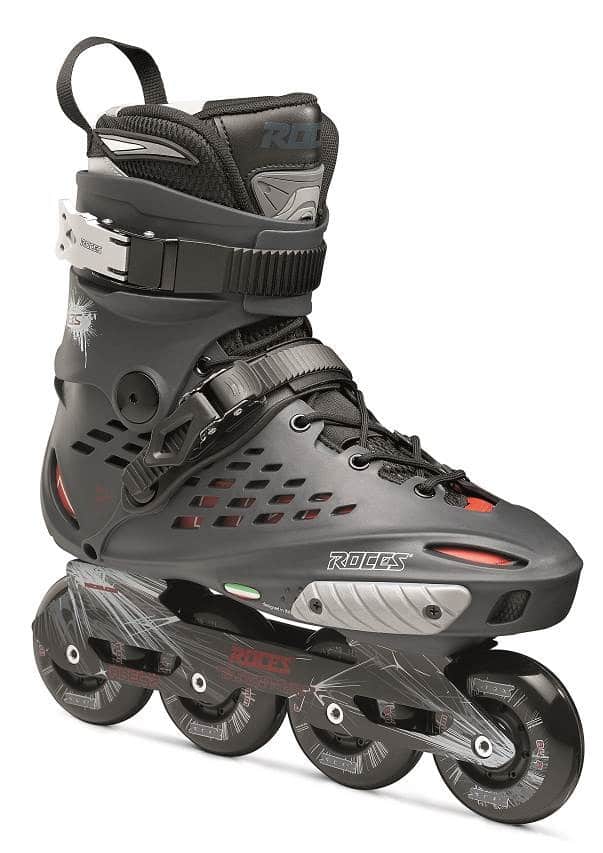 The Roces X35 contrasts with the usual models of the brand. First of all, we notice the ventilated design, with about 30 holes pierced on each side of the shell. Let’s also note the firm wrap around the ankle provided by the streamline cuff.
The Roces X35 contrasts with the usual models of the brand. First of all, we notice the ventilated design, with about 30 holes pierced on each side of the shell. Let’s also note the firm wrap around the ankle provided by the streamline cuff.
The replaceable slider plates will limit the wear of the shell in case of a fall or mishandled slide.
The overall grey color is highlighted by touches of red and white, and by a discreet Italian flag indicating its Italian origins. Colors are so similar that the 243 mm frame blends in with the wheels.
In short: A freeride-type skate that contrasts with other competitive models on the market.
Liner
The removable padded liner seems promising at first sight, and distinguishes itself by its clean finition. It has many different parts, especially around the heel, and a generous foam padding. On the other hand, the mesh seems a little irritating.
Let’s note the ergonomic design at the Achilles tendon with the Easy Entry System (a neoprene part for better comfort and easier slipping on), and the presence of triangle-shaped breathing holes under the toes. The liner also has an anatomical micro-perforated insole.
In practice, it is frustrating to become aware of what looks like a pattern mistake. It is hard to slip your heel in, and just as complicated to put it flat in the liner. And since your heel goes up at the slightest push, friction blisters appear after a few minutes only.
Changing the insole, the discomfort was slightly reduced, but blisters were still there after less than 15 km… And since the problem disappeared in changing liners, this is definitely an improvement target for the future.
The problem was quickly solved with a heelpiece placed inside the boot, to prevent the heel from moving up and down, and put an end to any friction risk.
Tightening
Roces opted for a combination that has proved its worth: Laces and micrometric buckles, at the instep and around the ankle, a very efficient and precise system.
The adjustment is precise but not very practical, and even lacks efficiency in some cases. Indeed, if you don’t position them carefully, the pieces supporting the buckles regularly bump against each other, or against the shell itself. You have to take the time to make them overlap properly.
Lacing can be difficult because the ankle eyelets are very close to the buckles. A supplementary eyelet at the toes would have been welcome, especially when you know that the weak point of shell skates is the packing of the foam at the toes. Moreover, the laces stop at the instep and cannot complete the tightening of the cuff. Two supplementary eyelets just under the cuff would have left you the choice to adjust your ankle tightening.
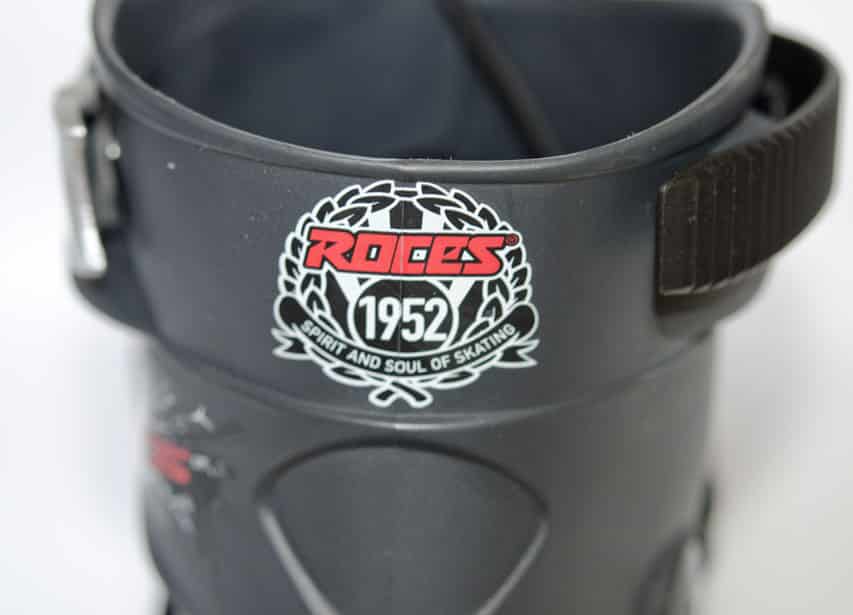 This system may be suitable for strong feet, but cannot be tightened to the max for slim feet. One of the tightening parts will inevitably stop against another part before reaching the optimal tightening needed for that type of foot. The problem is, that it is the reverse situation to that of the liner, the snug fit of which, as is, only seems to be suitable for very slim feet, at least at the heel…
This system may be suitable for strong feet, but cannot be tightened to the max for slim feet. One of the tightening parts will inevitably stop against another part before reaching the optimal tightening needed for that type of foot. The problem is, that it is the reverse situation to that of the liner, the snug fit of which, as is, only seems to be suitable for very slim feet, at least at the heel…
In short, a little more finishing work would be needed there.
The plastic of the tightening buckles doesn’t seem to be up to the market references, the Rollerblade Twister and the Seba FR.
Support
Once tightened to the max, you get a rigid skate with good wrapping support. On the practical side, you should have a thin and flexible foot if you want to slip it into the boot, because the very rigid shell doesn’t move much. Still, the shell of the Roces X35 softens up a little with time, like most models with plastic shells.
The liner, quite rigid too, sticks out a lot from the cuff, (exaggeratedly?) supporting the ankle up to the third of your shin (2 cm higher than our usual skates). The cuff is blocked in a backwards position by a stop on the shell, keeping your center of gravity over your skates. We regret the lack of flexibility of the cuff, that forces you to adopt a looser tightening to gain amplitude, or force on the plastic of the cuff to make it more flexible for some slide tricks, for example.
Comfort
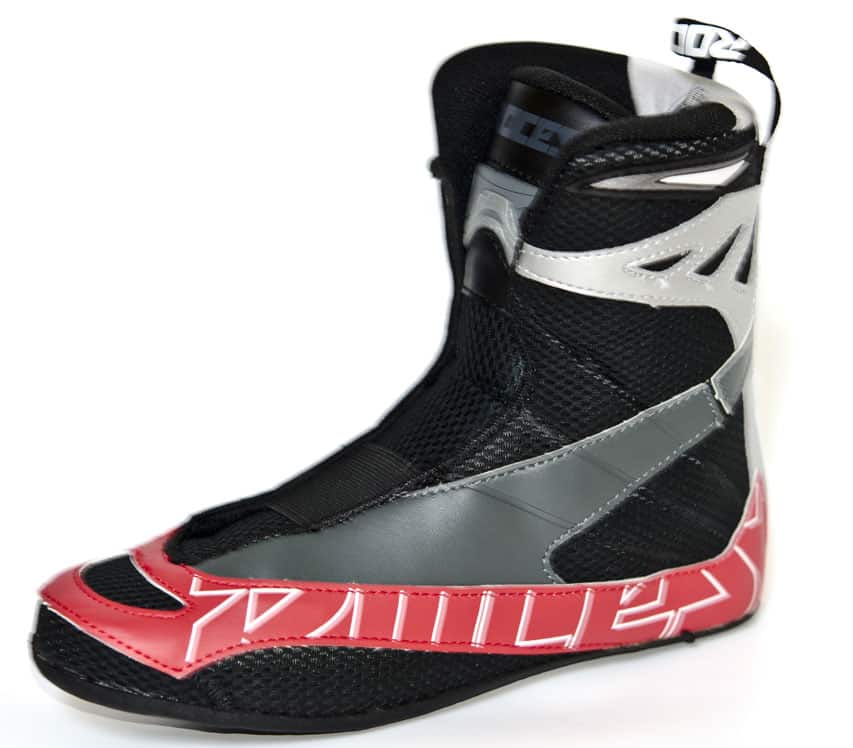 The liner and the tongue, going up to the shin, make the skate relatively uncomfortable. After one hour of practice, pressure points, leading to blisters, appeared especially at the heel and on the external side of the foot, more precisely at the lateral support. Coming back from that street skate was painful.
The liner and the tongue, going up to the shin, make the skate relatively uncomfortable. After one hour of practice, pressure points, leading to blisters, appeared especially at the heel and on the external side of the foot, more precisely at the lateral support. Coming back from that street skate was painful.
As for slalom, the rear stop of the cuff makes toe wheeling tricks — just like long pushes ‘to your toetips’ — very uncomfortable.
The lack of flexibility, due to the design and the fixing of the cuff, tend to make the skate rigid indeed, but to the detriment of elementary comfort, yet essential today for that type of skates.
Frame
First thing noticed when you dismantled your skate: the double interaxial space under the boot! It is suitable for both 165 and 195 mm frames, which leaves a good bunch of customization possibilities… Roces must have something in mind!
But let’s go back to the frame as such. It is an extruded aluminum model with thick sidewalls and 3 bridges between the wheels. The bases in contact with the boot are wide for good support. To sum it up, it’s solid!
On the scale, it weighs 196 g, which is in the average of freeride/slalom models in 243 mm.
The centering of the frame is adjustable, which is a good thing because I wasn’t fond of the original set-up.
The aluminum frame measuring 243 mm, it is suitable for slalom and freeride for sizes about 39 to 43. On the other hand, small feet should go on their way, or change plates!



Wheels
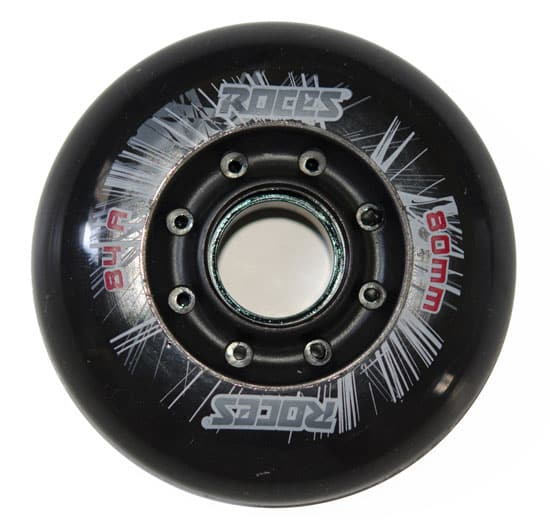 We measured 79.2 mm for the diameter of the wheels, instead of the indicated 80 mm. The hardness is said to be 84A but we measured 81 to 82A. The acceptable margin of error being 2 shores (A), they keep more or less within the framework. They weigh 86 g, also in the average of a freeride wheel.
We measured 79.2 mm for the diameter of the wheels, instead of the indicated 80 mm. The hardness is said to be 84A but we measured 81 to 82A. The acceptable margin of error being 2 shores (A), they keep more or less within the framework. They weigh 86 g, also in the average of a freeride wheel.
The structure of the wheel immediately reminds us of that of the Hyper Concrete +Grip, one of the reference models on the market. The rebound test is conclusive but you cannot say that the wheel renders energy that well in practice.
Compared to the 85A quality wheels we are used to skate with, the difference is significant and those wheels are detrimental to the pleasure of skating with those skates — a pleasure found again as soon as the usual wheels are mounted. These wheels are passable for fitness skating but too soft for slalom/freeskate. The wear wasn’t regular, with peel appearing as soon as the first sessions.
With time, and after repeatedly practicing tricks that require perfect grip (rotations on the edge of the wheel) the wheels ended up bending, revealing deep grooves.
Bearings
Roces opted for ABEC 7 608 ZZ set bearings, meaning that they cannot be dismantled, which has both pros and cons: Pros because they are better protected from dirt, and cons because once jammed, you cannot do much except for lubricating on the surface.
Another detail: Not having collars, the bearing spacers are a bit harder to align.
Finishing
The overall finishing is very satisfying, with very few flaws to be noticed: A little extra plastic remaining in the holes of the wheel hubs, a couple seams on the liners with the thread protruding, but it is clean on the whole.
One regret yet for a skate that obviously seems designed for freeride: A flatter finishing under the boot would have allowed easier stalling for sliding tricks. The X35 boot is rounder, which makes it harder to stall.
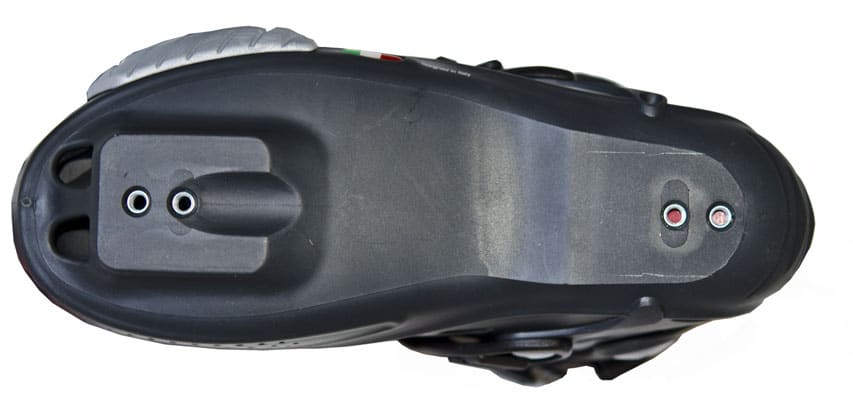
Quality-price ratio
For 229€ Roces offers a successful model, with a few modifications needed for the liners and the buckles, a good rival to the Rollerblade X5. To the light of its performances and its price, this skate places itself at the same level as the Seba FR1 and the Rollerblade Twister. It is not recommended for competition, but very suitable for skaters of intermediate level who are looking for solid and versatile skates.
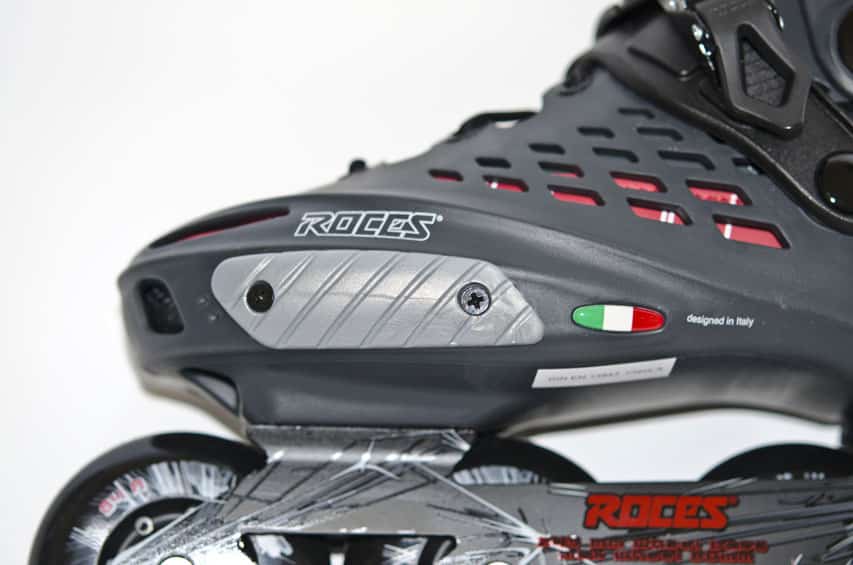
Conclusion
Roces delivers a very promising skate with quite a successful design. The Italian brand will reach a new level once a few finishing details are adjusted…
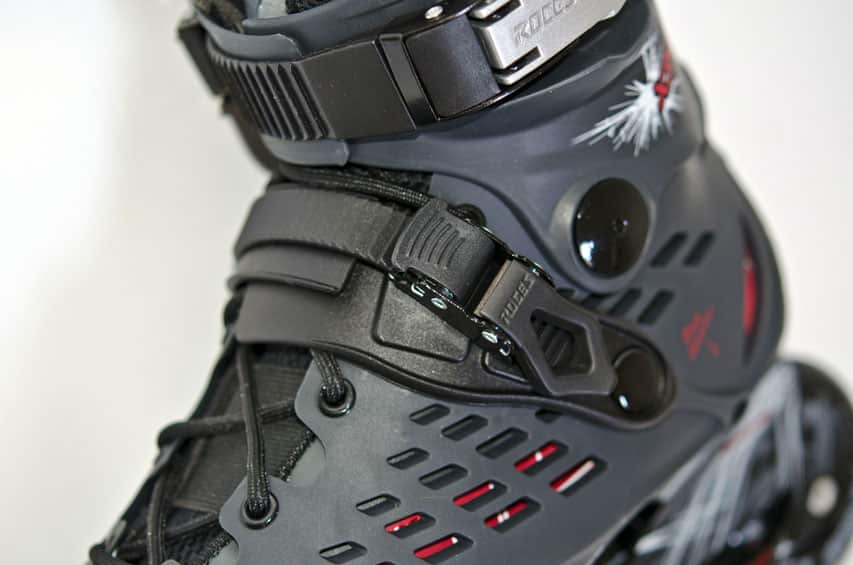
Strong points and points to be improved
 |
Pluses+ General support |
 |
Minuses– Liner friction |
Technical facts
Brand: Roces
Model: X35
Year: 2015
Shell: Asymmetrical polypropylene ventilated shell with asymmetrical cuff – streamline fitness design
Liner: Anatomical, padded with microfiber lining
Tightening: Micrometric buckles and asymmetrical lacing
Sizes: 3-14 UK / 4-15 US
Frame: LiteDesign extruded aluminum – 2 Arch Design – 243 or 279 according to boot size
Interaxial spacing: 165 and 195 mm
Wheels: Roces 80 mm 84 A
Bearings: 608 ZZ ABEC 7 set bearings
Bearing spacers: Aluminum
Total weight for a size 40 EU: 1560 g
Price: 229€
Useful links
Full OLS card on the Roces X35 here
Clochette, TotoGT, Alfathor
Translation: Chloe Seyres
Photos: Roces and Alfathor
